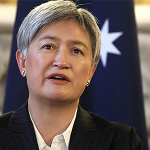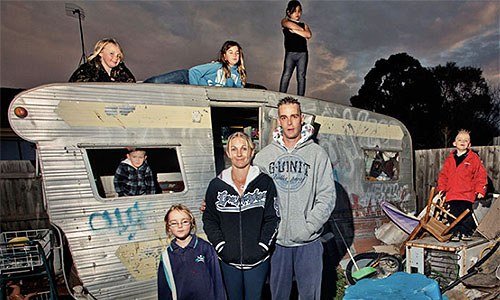
THESE are the engineering marvels that have helped to make Australia great.
All five are inconceivably complex feats of brilliance and they continue to strike pride among Australians – while attracting awe from across the globe.
Some were completed under budget and on time. Others blew out their costs by as much as 14-fold while another took so long to finish that no-one has a clue of its total cost.
Without exception, their design and construction caused great division and much heartache among many of those involved
But as the dust settles and the disputes are forgotten, few people these days would change a thing … apart from the tragic loss of construction lives and the questionable treatment of an architectural genius from Denmark.
NUMBER 5: Sydney Harbour Bridge
Famous convict architect Francis Greenway first proposed a bridge across Port Jackson in 1815.
Nearly a century passed before a workable plan was devised, and in 1916 John Bradfield’s famous coathanger design was formally accepted. WWI interrupted construction, and almost 800 homes and a school were demolished in 1923 to make way for the pylons and approaches.
Over the ensuing nine years, six million rivets, 52,800 tonnes of steel and 45,000 tons of Moruya granite were used to complete what would become Sydney’s tallest structure, at 134m, until surpassed by Australia Square in 1967.
A total of 16 lives were lost during construction – two from falls.
The Sydney Harbour Bridge is a heritage-listed steel through arch bridge across Sydney Harbour that carries rail, vehicular, bicycle and pedestrian traffic between the Sydney CBD and the North Shore.
The opening on March 19, 1932, is remembered thanks to sword-wielding Francis de Groot’s upstaging of Labor Premier Lang’s ribbon cutting.
NUMBER 4: Ord River Irrigation Scheme
Extremes of wet and dry weather in Western Australia’s north west made agricultural production unpredictable, alternating between excess and total crop loss.
Plans for dams, experimental farms and irrigated pastures were trialed as early as the 1920s but it wasn’t until 1963 that construction began on a large-scale dam system to enclose the waters of the Ord River.
Prime Minister Billy McMahon opened the scheme in 1972 to great fanfare. The Ord River dams provide water to irrigate more than 117 km² of farmland and there are plans to extend the scheme to allow irrigation of 440 km² in the future. The main Ord River dam also generates power for the local community of Kununurra.
Today the 117 km² area of farmland produces viable crops of fruit, vegetables and Indian sandalwood. Lake Argyle has also created a useful sanctuary for 26 species of native fish.
The Ord River Scheme has not, however, been an economic success. It has been estimated that its $1.45 billion cost has provided a return of only 17c on the dollar and created only 260 jobs.
NUMBER 3: Sydney Opera House
The then 38-year-old Danish architect Jørn Utzon won his eighth architectural prize with the awarding of the Sydney Opera House contract in 1957.
But his designs were so futuristic that none of the prior seven had ever been built – and by the time Utzon moved his office to Sydney in 1963, he’d begun to wish this one hadn’t either.
By 1961, two years after commencement, the project was already a year behind schedule with the original shells of the competition entry being of “undefined geometry”.
Early in the design process, the shells were perceived as a series of parabolas supported by precast concrete ribs. However, engineers Ove Arup and Partners were unable to find an acceptable solution to construct them. The form-work for using in-situ concrete would have been prohibitively expensive, and, because there was no repetition in any of the roof forms in the original design, the construction of precast concrete for each individual section would possibly have been even more expensive.
Utzon eventually formulated an inspired solution while peeling an orange (see video link below).
The building and its surrounds occupy the whole of Bennelong Point on Sydney Harbour adjacent to the Royal Botanic Gardens and close by the Sydney Harbour Bridge.
Though its name suggests a single venue, the building comprises multiple performance spaces which together host more than 1500 performances annually that are attended by more than 1.2 million people.
The concept of a large, multi-purpose venue was lobbied for as far back as the 1940s and finally approved in 1954.
But, after much debate, the Cahill Government wanted an urgent start to bolster public opinion and insisted the project begin even before crucial designs were formalised. As a result much of the foundations needed to be demolished and rebuilt.
A change to a Liberal government in 1965 brought even more tension and Utzon finally resigned in early 1966 amid controversy. By completion, the structure had cost 14 times more than its original budget of $7m.
One death was recorded during construction – that of a crane operator.
When formally opened in 1973 by Queen Elizabeth II, Utzon’s name was not mentioned. He died in Denmark in 2008 having never laid eyes on his completed masterpiece.
To the end, though, Utzon never stopped thinking about the magnificent landmark he had created. “I have the building in my head,” he said, “like a composer has his symphony.”
NUMBER 2: Adelaide to Darwin Railway
The idea of a railway from Adelaide to Darwin was first floated in 1858 and by 1878 the first sods of earth were turned. Some 126 years later, the very first train finally rolled into Darwin.
The Adelaide to Darwin railway is a 2,979km south-north transcontinental railway. Built in stages during the 19th, 20th and 21st centuries, the line was completed when the Alice Springs to Darwin line finally opened in 2004. It is used by The Ghan passenger train and freight trains operated by Genesee & Wyoming Australia.
The first southerly section from Adelaide to Alice Springs was completed in 1929, then abandoned in 1980 when the old narrow-gauge line fell into disrepair.
By the 1940s the northerly section fell some 500km short of Darwin, leaving wartime truck convoys to straddle the gap to deliver urgent materials.
The Adelaide to Alice Springs section was realigned and completely rebuilt by 1980; while the northern section finally reached Darwin early in the following century.
The line consists of:
- 6 major bridge crossings;
- 87 minor bridges;
- 1500 culverts;
- 145,000 tonnes of rail;
- 2.8m tonnes of ballast;
- 2m sleepers;
- 8m sleeper fastenings.
The total cost of the 126-year project is unknown.
NUMBER 1: Snowy Mountains Scheme
This is the big one. A quarter of a century in the making, this project had more than 100,000 people from 30 nations working on the scheme and it employed nearly 8000 people on the job at any one time.
At a final cost of $820m, this gigantic project of 16 major dams, seven power stations and 225km of tunnels and aqueducts came in on time and on budget. A memorial commemorates 121 lives lost during construction.
The Snowy Mountains Scheme is a hydroelectricity and irrigation complex in south-east Australia. Its primary aim was to reverse the flow of the Snowy River away from the Tasman Sea and instead, redirect it inland into Australia’s newly-created Riverina agricultural food bowl.
The Scheme was completed in 1974 under the supervision of Chief Engineer Sir William Hudson and is the largest engineering project ever undertaken in Australia.
Begun in 1949 with a workforce of mainly European refugees and immigrants, the project was hailed around the world as a monument to civil engineering, cultural cooperation and political efficiency.
It is notable that only two per cent of its construction is visible above ground, with the bulk of its infrastructure being built deep within the mountains.PC










